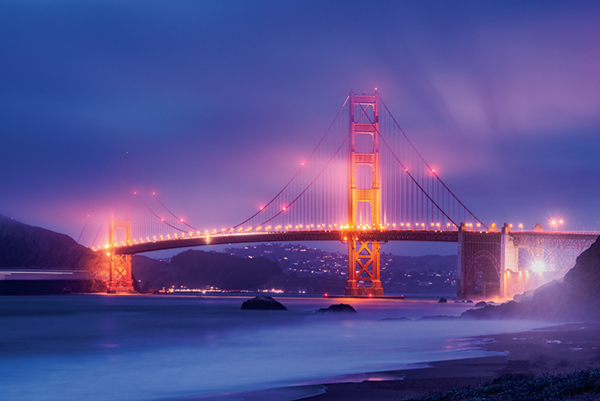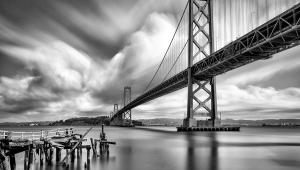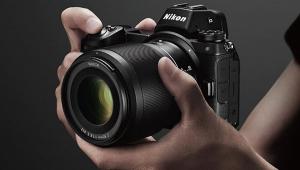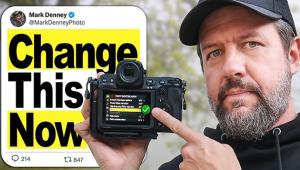What to Bring on the Road: Pro Shooter Deborah Sandidge's Favorite Travel Photography Gear

All Photos © Deborah Sandidge
Somewhere along the line in a pro photographer’s career, or amid an enthusiast’s pursuit of picture making, you achieve a balance between geared up and weighed down when it comes to lens choices. You want versatility, but you also want to be mobile, even comfortable.
For me, the key to finding and maintaining that balance is knowing what I’m going to shoot and, more important, how I want to shoot it.
First, though, it’s knowing where I’m going. Simply, I’ll take more lenses if I’m going to be driving in the States, fewer if I’m going to do a lot of walking while traveling internationally.
But there are lenses—since I shoot with Nikon cameras, they’re all Nikkors—that I must have no matter where I’m going or how I’ll be getting around.


• The 16-35mm f/4 zoom is my most-used travel lens for everything from cityscapes to landscapes. It’s my hero lens for bringing subjects in close for images with impact. It’s got vibration reduction and accepts 77mm filters so I can use my ND (Neutral Density), color enhancing, and polarizing filters with it. I can put it on a tripod, put on a 15-stop ND filter, and create something in the fine art realm to complement my travel photos. (The 24-70mm f/2.8 gives me more at the wide end, and I’ll carry it along with the 16-35mm when I’m going to be driving, but when space, weight, and walking are considerations, the smaller, lighter 16-35mm is my choice.)
• Next, the 28-300mm f/3.5-5.6 is the “must-have” long-ranger telephoto zoom. It’s perfect for travel, and if you’re limited by space, weight, or family to one camera, one lens, this is the one to carry. Its vibration reduction allows handheld shooting—most of the time—and it accommodates all my filters.
• Then, the 50mm f/1.8. Small and packable, it’s ideal for low-light situations, but the beauty of it is how it paints the background when I shoot wide open. Close to a subject, at f/1.8, I get a look that just doesn’t happen with other lenses. Bokeh is often the main attraction, but the dynamics of everything changes when I shoot at full aperture with that lens.
• The 16mm fisheye. It’s small, relatively fast at f/2.8, provides a 180-degree super view and a host of creative options in all sorts of situations and locales. I love pointing it toward the sky when I’m in the middle of a cityscape or out under the stars. I sometimes hold it level, like you’re supposed to, but I prefer tilting it to capture a rounded world of wonders. What I like best is its different view, one that’s often dramatic and visually unique, a view beyond what’s real; reality is not what I’m after when I pick up that lens.
And that’s the absolutely essential glass.


Support System
I can’t talk about lenses without including some notes about tripods.
I learned soon after starting photography how important the support system was. I started out using a heavy tripod with a pistol grip head, and every time I got my composition just the way I wanted, the grip sagged. It just wouldn’t tighten down enough to hold, and images that were several-second exposures were blurry. Heavier didn’t necessarily mean better—especially since I can do 12 miles a day walking to photograph a city—but the tripod head was just as important a decision as the sticks themselves.
Longer story of trial-and-error made shorter, I now have the right combination for me: the Gitzo GK1545T-82TQD Series 1 Traveler Kit. Carbon fiber, lightweight, packs in the side of my backpack, with a sturdy ball head that keeps my compositions just as I set them.
And for holding my camera and lens on ledges, balconies, tables, and anyplace else I can’t carry a tripod, I have a Joby GorillaPod Focus fitted with a Really Right Stuff BH-30 Compact Ballhead.
So that’s what I carry when it comes to essential lenses and tripods. I can’t guarantee they will suit your needs, but I have no hesitancy in telling you they’re good, field-tested considerations.
Of course, I have several other essentials—things like filter holders, clamps, brackets, smartphone apps, and maps—so this particular column’s focus will have a part two, coming up soon.

A selection of Deborah Sandidge’s world photography is at deborahsandidge.com, along with cinemagraphs, photo tips, and a schedule of upcoming workshops, photo tours, and seminars.

















































